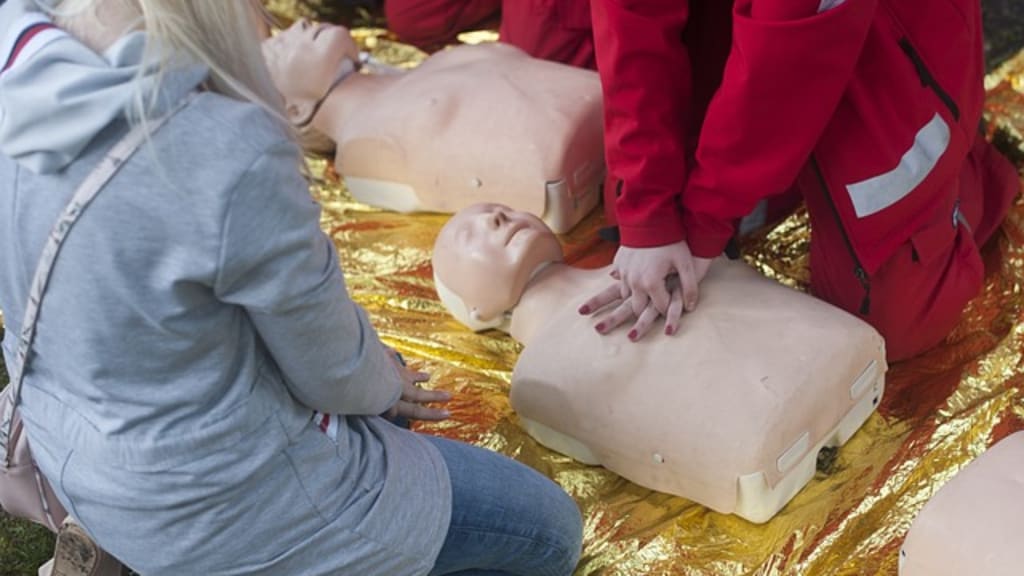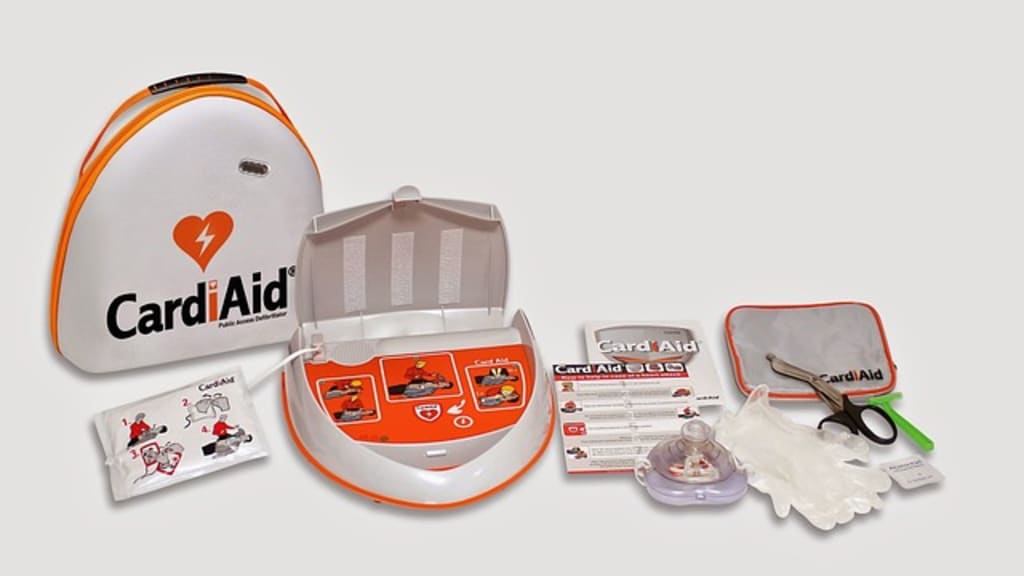
CPR or Cardiopulmonary Resuscitation is a life saving procedure performed when someone’s heart stops beating. CPR can double or triple the chances of the person’s survival following a cardiac arrest. If you are unsure or feeling scared to do CPR, just remember, it is always better to try and help a person stay alive than to do nothing at all.
Heart attack vs Cardiac arrest
-
Cardiac arrest
- Can occur suddenly and without warning and typically the person collapses and becomes unresponsive.
- It happens when the electrical malfunction causes the heart to stop beating unexpectedly.
- Heart is unable to pump the blood around the body and the person stops breathing normally.
- Cardiac arrest is an extremely serious health issue and likely to cause near-immediate death or disability.
- Immediately call emergency services and attempt to perform CPR while waiting for the medical staff to arrive.
-
Heart attack
- Also referred to as myocardial infarction usually happens when the coronary artery becomes blocked, blocking blood flow to the heart.
- Without blood flow, the affected heart muscles begin to die.
- Blood flow needs to be restored quickly otherwise the heart attack can cause permanent heart damage and death.
- Call emergency services and get the person to a hospital as quickly as possible
C-A-B
The American Heart Association (AHA) uses the letters C-A-B to help remember the steps of conventional CPR.
- C - Compression (Chest compression)
- A - Airway ( open the airway)
- B - Breathing ( rescue breathing)
Performing Chest Compression:
- Ensure the person is lying on their back on a firm surface.
- Kneel down next to the person’s chest.
- Place the heel of one hand over the centre of the person’s chest, between the nipples. (Draw a line from armpit to the centre to find the hand placement).
- Place the other hand over the first, interlocking your fingers. Keep your elbows straight and place your shoulders directly above your hands.
- Push straight down on the chest at least 2 inches (5cm) to no more than 2.4 inches (6cm). Use your body weight, not just the strength from your arms.
- Lift your hands slightly off the chest between compressions to allow the chest to come all the way back up.
- perform chest compression at the rate of 100-120 compressions per minute. You can use the beat of the song “Stayin’ Alive” by Bee Gees to time your compressions
Types of CPR
-
Conventional CPR:
- Healthcare professionals or those trained in conventional CPR can follow
- First ensure the place and environment is safe for both yourself and the person i.e there are no chances of debris falling, or loose electrical cables etc.
- Tap or shake the shoulders and ask loudly, “Are you ok?”
- Call 999 (UK)/911 (US)/ 112 (India). If there is another person with you, get them to call the emegency number and also for them to look for an AED, if one is available. You can focus on performing the CPR.
- If you are alone, call the emergency number and put your phone on speaker while you attempt CPR.
- Put the person on their back on a firm surface.
- Tilt the person’s head back
- If there is pulse but no respiration, give 1 rescue breath every 5 seconds and recheck pulse every 2 minutes until ambulance arrives. Watch how to check for pulse and to give rescue breaths.
- If performing CPR, give chest compressions and mouth-to-mouth breathing at a ratio of 30:2 compressions-to-breaths
- Review the section on how to perform chest compression. Refer to this detailed video on how to perform CPR.
-
Hands-only CPR:
-
Also known as compression-only CPR.
-
The American Heart Association recommends that people who haven’t received CPR training initiate hands-only CPR, that is CPR without mouth-to-mouth breaths.
-
AHA guidelines state that it is difficult for non-trained professionals to check for pulse or check for breathing, checkout the AHA guide. If in doubt, follow the two steps below
- Call for help (ideally send someone to do that). If possible, put the phone on speaker.
- Push hard and fast in the centre of the chest, review the section on how to perform the chest compression.
-
Here is a video that demos how to perform hands-only CPR
For both conventional CPR and hands-only CPR, if there is someone with you, try to get them to help you perform CPR as well. Swap with them every 1 to 2 minutes with minimal interruption so that you can keep continuing to provide CPR until the medical help arrives.
AED
AED or Automated External Defibrillator are lightweight, easy to use portable electronic devices that can analyse the heart’s rhythm and help reset abnormal rhythm if possible. AED gives visual or voice prompts to guide you through what steps to follow and give the best chance of improving the chance of survival for a person having a sudden cardiac arrest. Read our guide on how to use an AED on an Adult, child and infant.
Raising awareness
There is more that can be done especially in developing countries to raise awareness and to get more people trained on important skills such as being able to perform CPR. You can be part of the movement by:
- Watch how to do Hands-only CPR video and share it with friends and family - those couple of minutes can save a life.
- Find an instructor-lead CPR course near you.
- Encouraging your workplace, residents association and or community centre to organise CPR training sessions and to purchase an AED.
- Start a corporate challenge at work to see which departments can train the most people in CPR.
- Display leaflets and posters related to CPR in your communal area of your residential building or your workplace. Find some leaflets at AHA website.
- Gift a CPR anytime infant kit to a new parent.
- For new parents, try to learn about CPR for infants and dealing with any other common emergencies before you leave the hospital with your new baby or sign up for a course as soon as possible.
Disclaimer
This post may contain affiliate links which means we may receive a commission at no extra cost to you should you click through and make a purchase.
Note: please check the ingredients list of any products that you may wish to try and check for allergies or consult a medical professional for any existing conditions being impacted by switching to new products.
Attribution
Banner Image by Andrzej Rembowski from PixabayPrevious

12/12/2023
CPR: guide to performing CPR on a child and infantsLearn to perform CPR on an infant or a child.
Next

12/12/2023
AED: guide to using an Automated External DefibrillatorLearn how to use an AED on an adult, child or infant having a sudden cardian arrest.